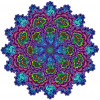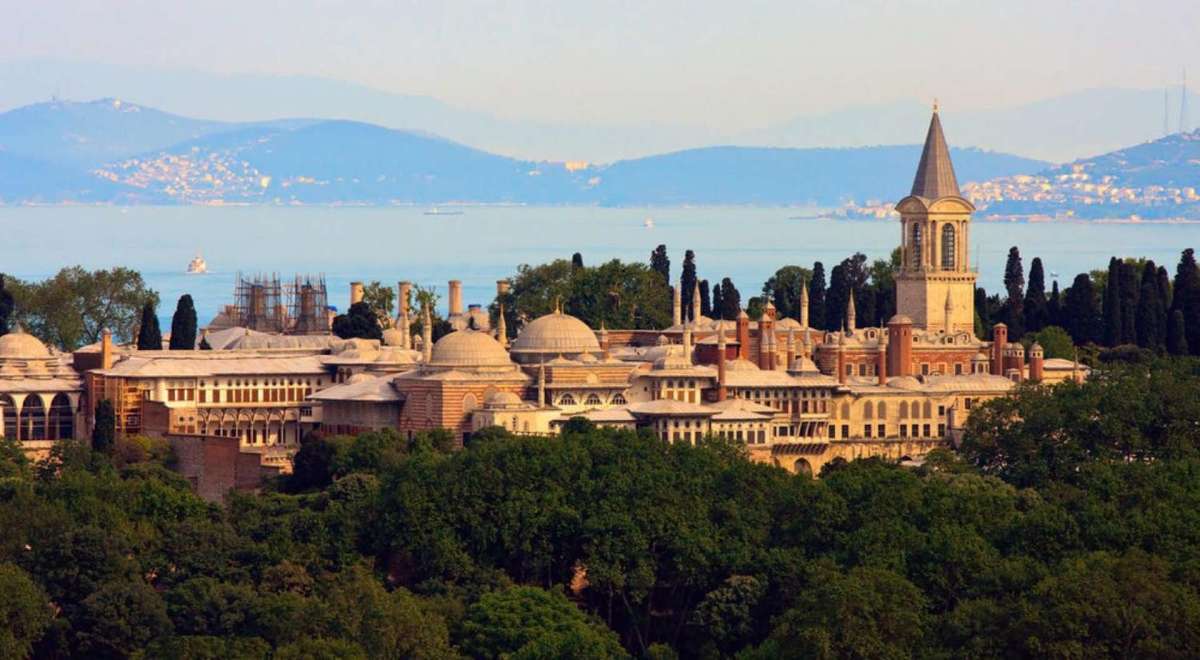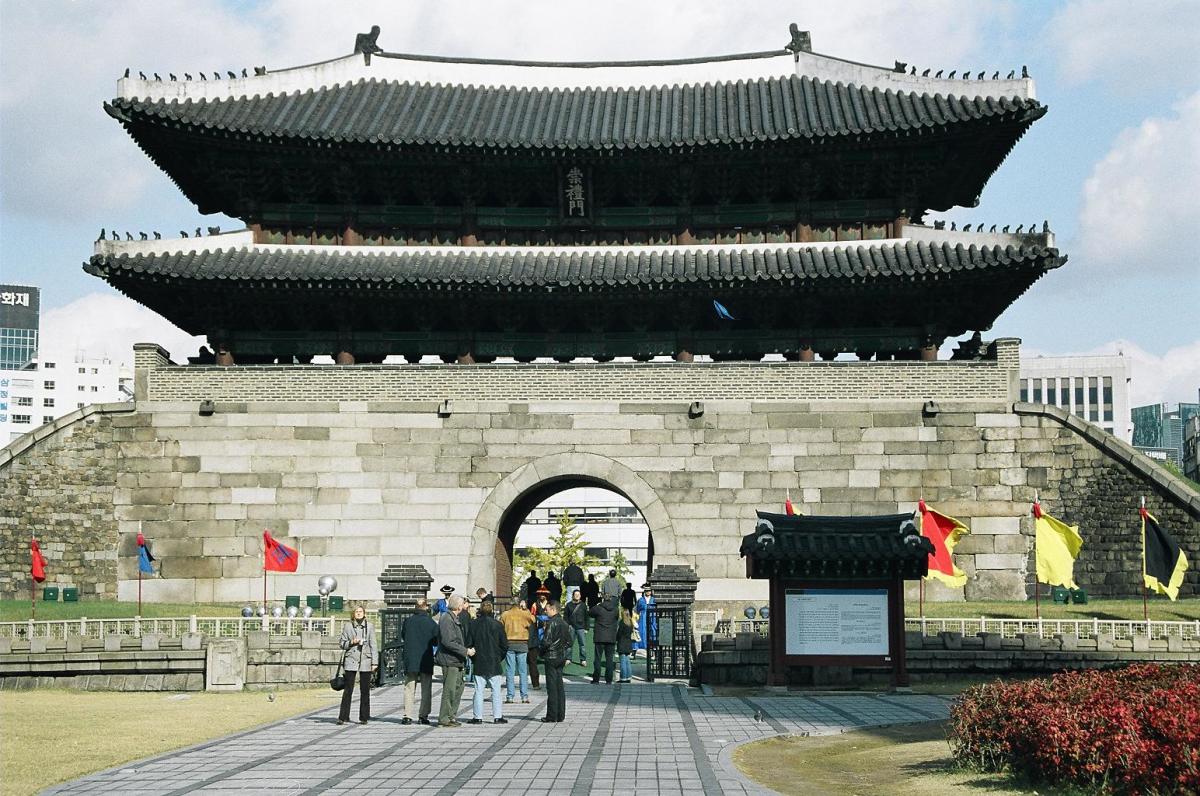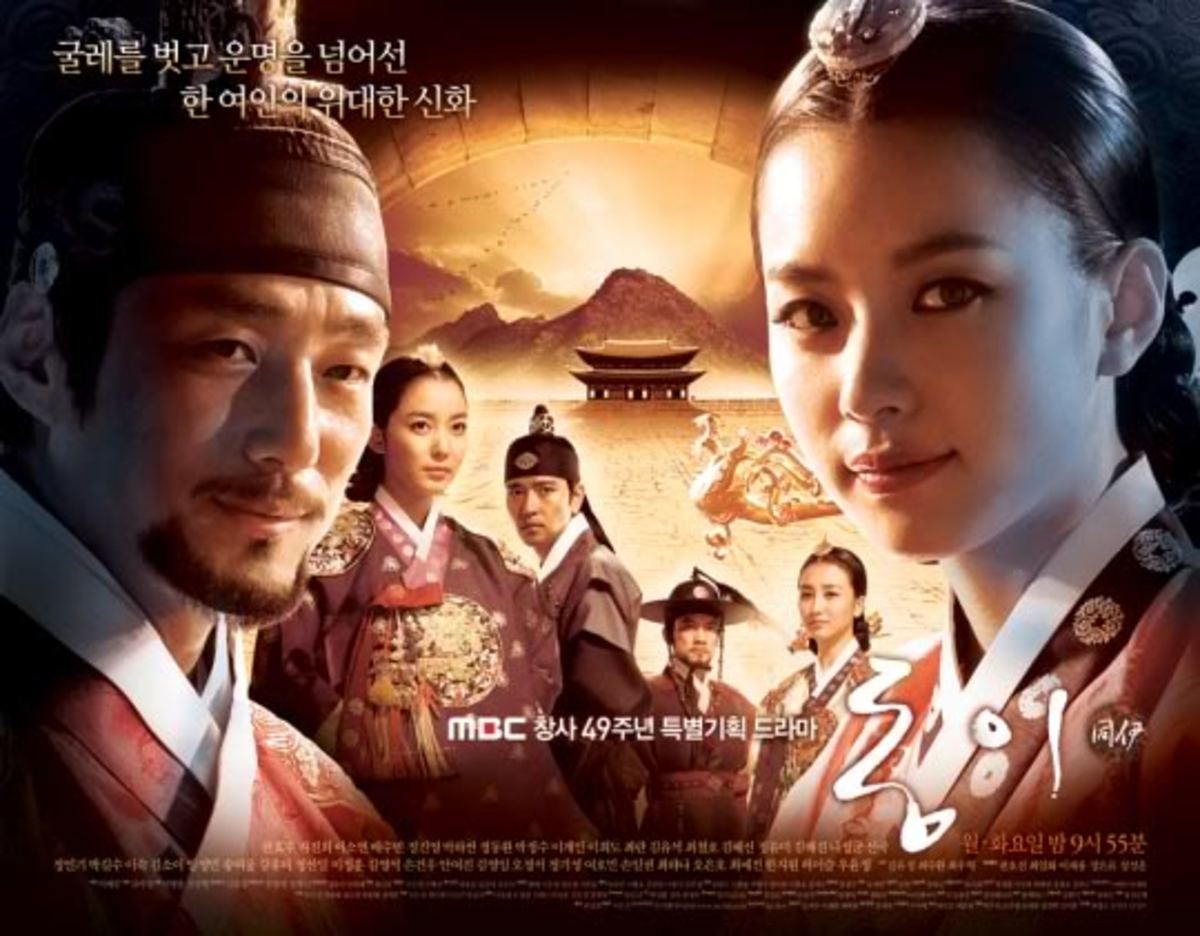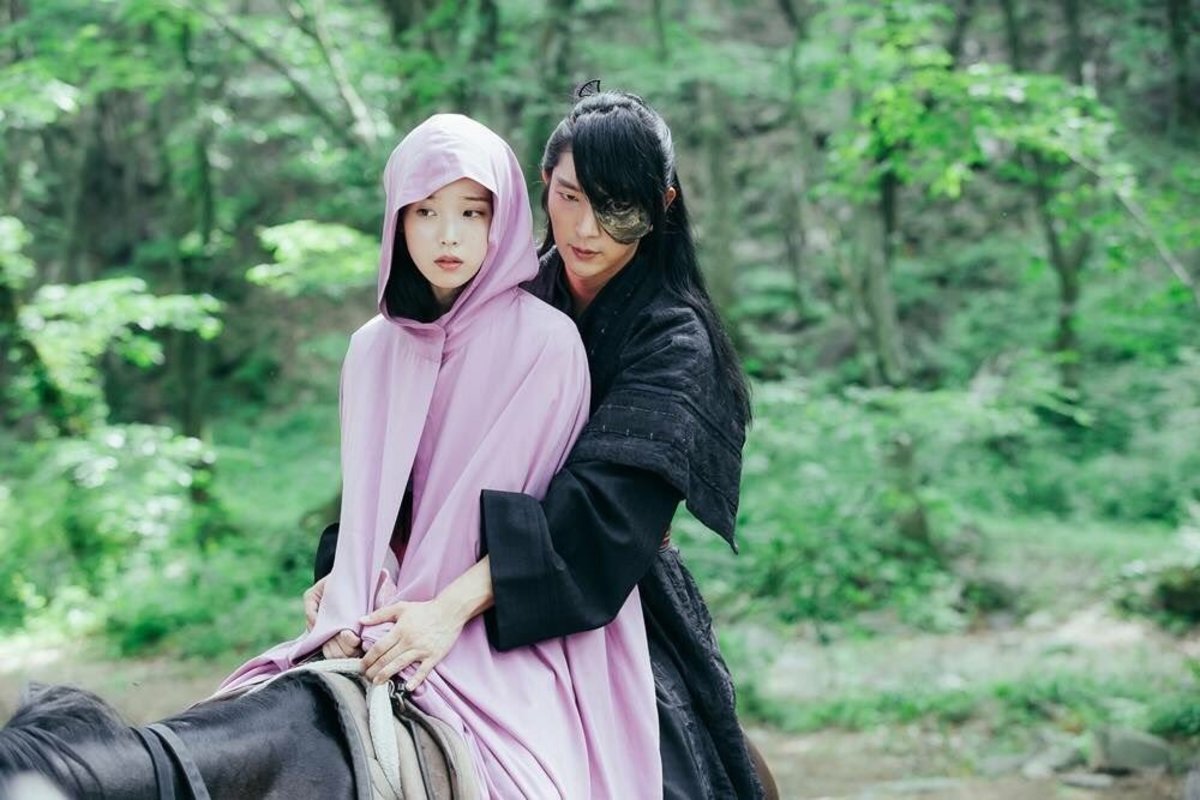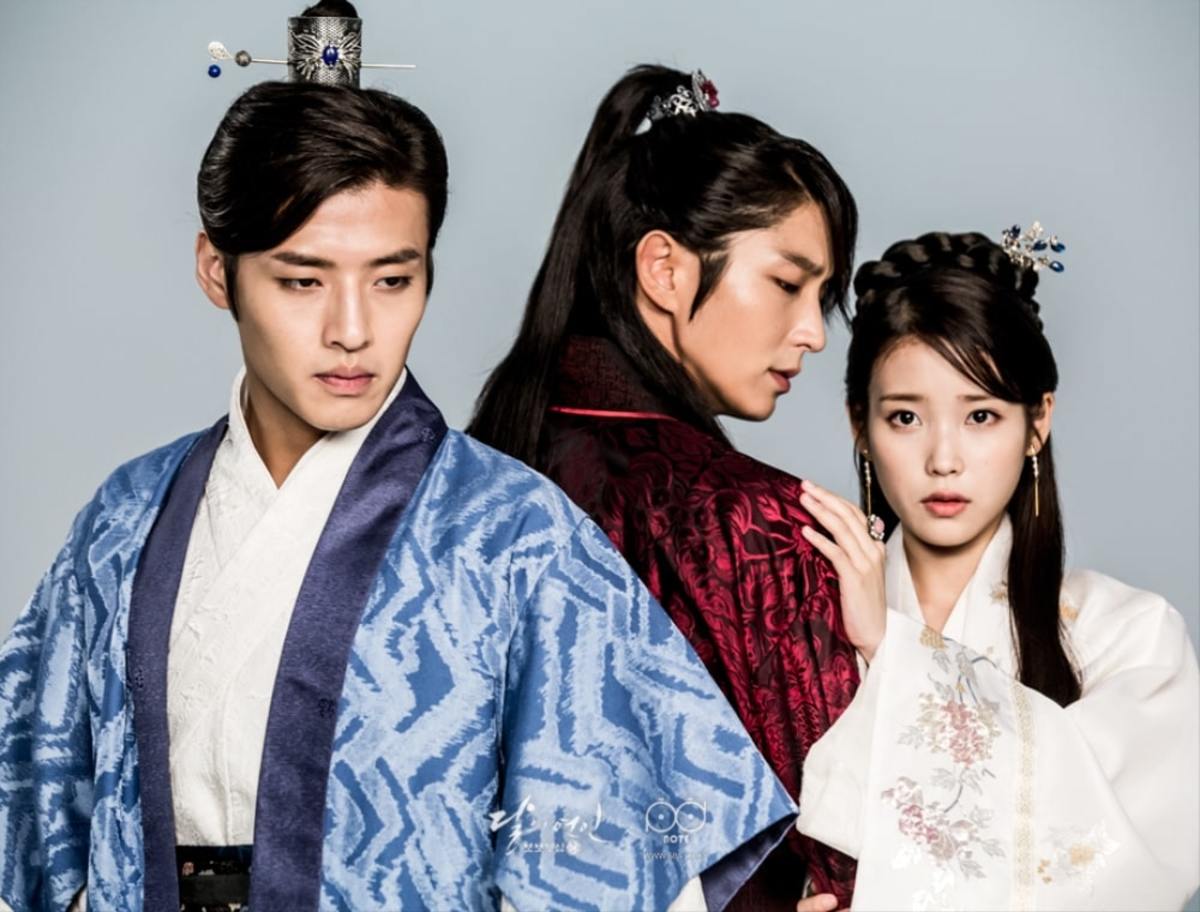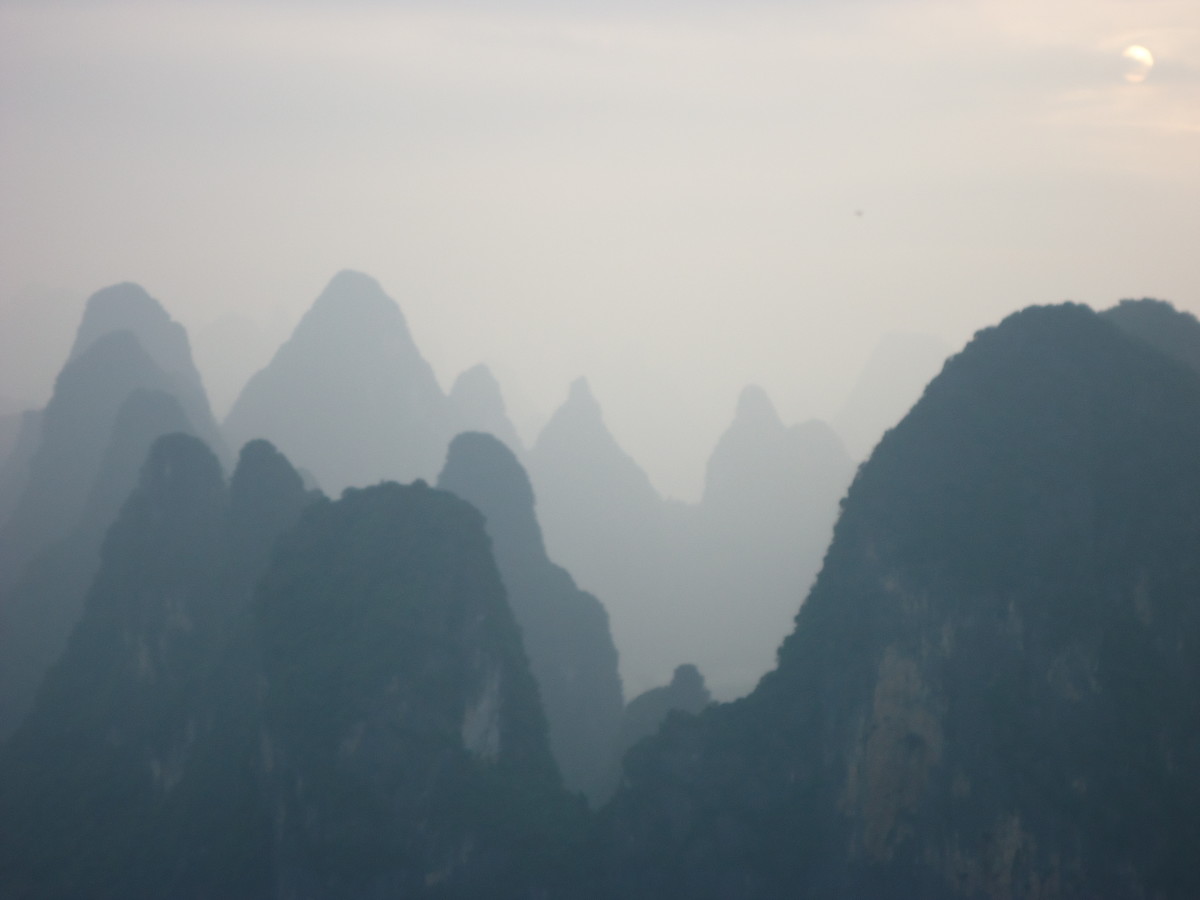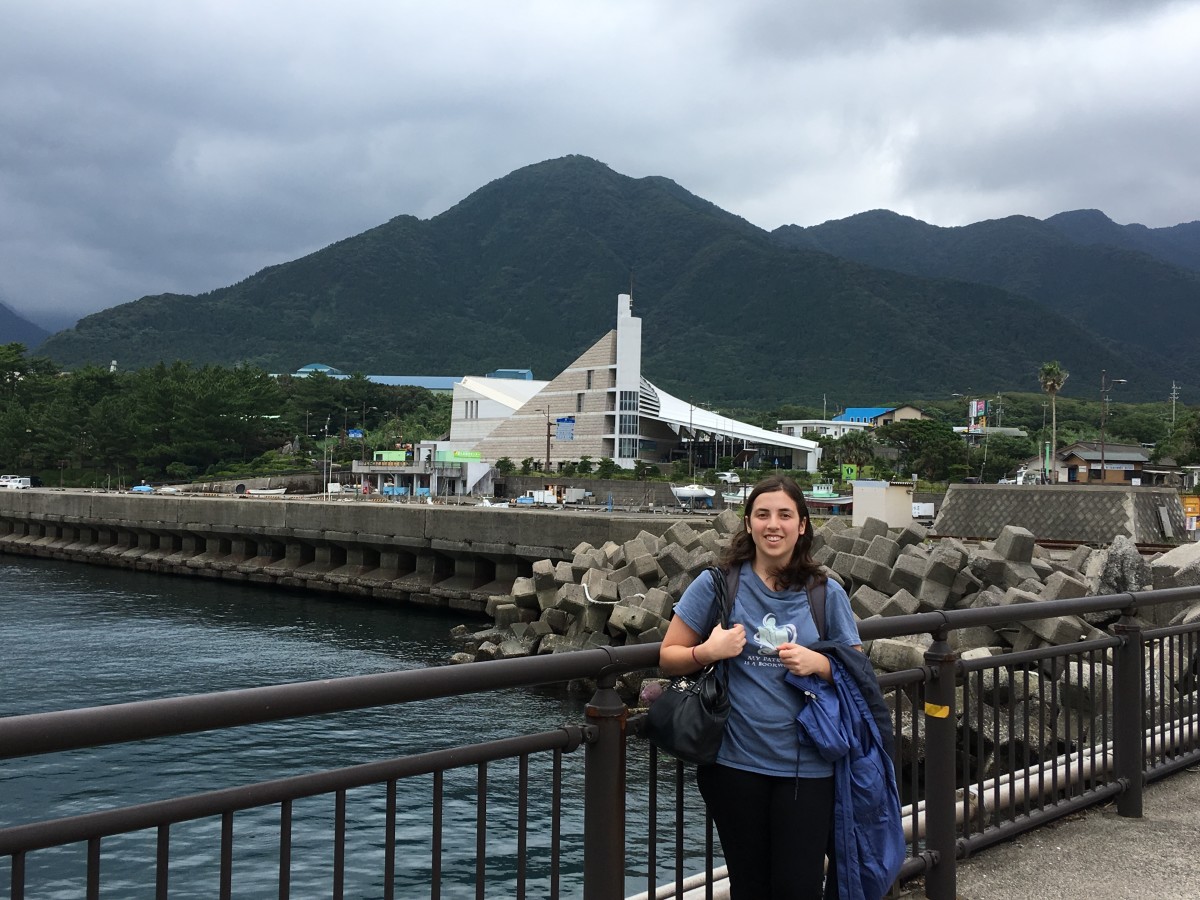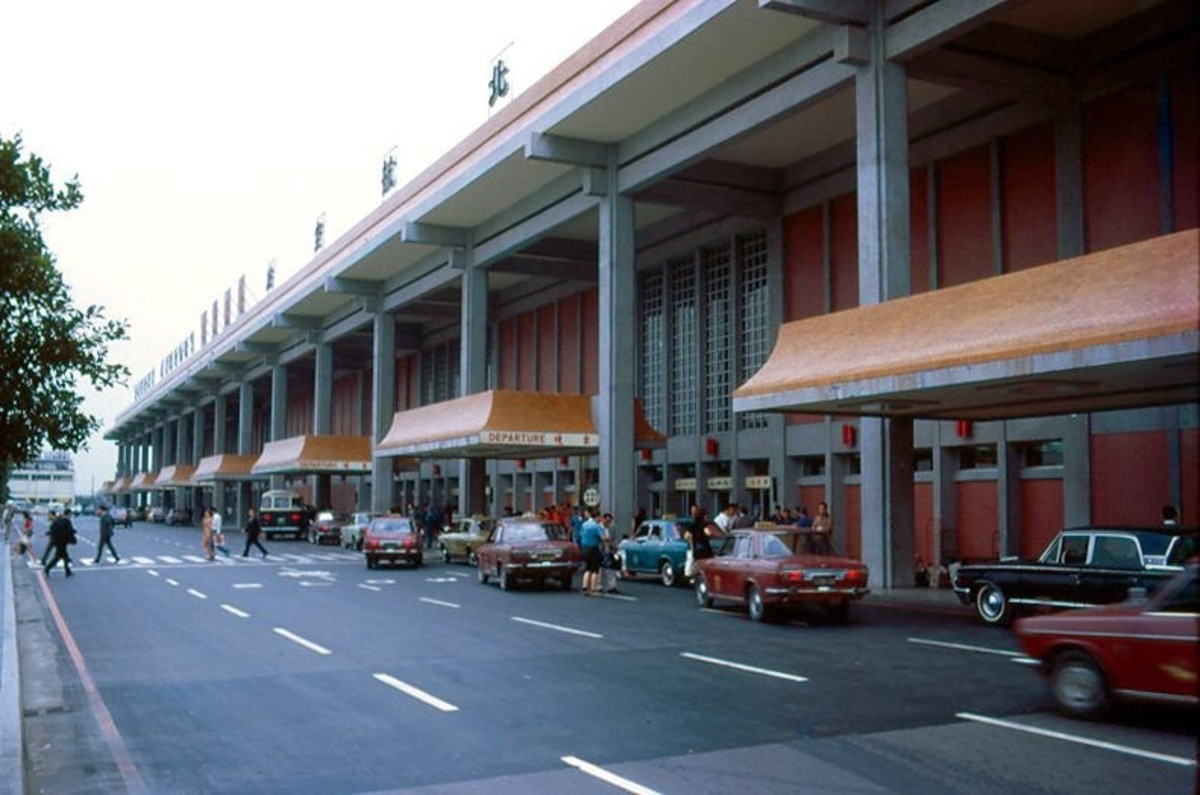- HubPages»
- Travel and Places»
- Visiting Asia»
- Eastern Asia
Gyeongbokgung Palace: Chosun Dynasty, Seoul
Gyeongbokgung
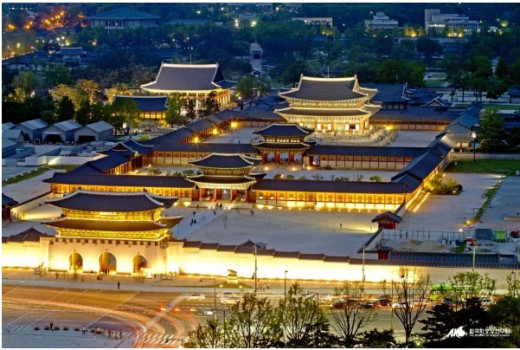
Gyeongbokgung
Gangnyeongjeon , also called Gangnyeongjeon Hall, is a building used as the king's main residing quarters. First constructed in 1395, the fourth year of King Taejo, the building contains the king's bed chamber.Destroyed during the Japanese invasions of Korea in 1592, the building was rebuilt when Gyeongbokgung was reconstructed in 1867, but it was again burned down by a major fire on November 1876 and had to be restored in 1888 following the orders of King Gojong.
Foundation of The Joseon Dynasty
After 475 years of history,the final curtain fell on the Goryeo Dynasty in the summer of 1392 with the founding of Joseon.The new dynasty was founded through an alliance between newly emerged literati,who adhered to Neo-Confucianism,and the military officer Yi Seong-gye.Among the decisions that needed to be made by the new leadership,Yi Seong-gye first sought to leave the Goryeo capital of Gaegyeong (today`s Gaeseong in North Korea) and find a new site for the capital.With the help of some of the finest feng shui experts in the land-including his friend and close advisor,the Buddhist monk Muhak-he set about finding a suitable location for the new city.
Many were opposed to the idea of relocating the capital,however.Even those who had played leading roles in founding the new nation did not approve of selecting a new capital,and the controversy lingered for about two years.In the end,the site built as Goryeo`s southern capital in the early 12th century.Known today as Seoul,Hanyang was situated on the north bank of the Hangang River,in a basin ringed by mountains.With a river flowing east-west to the south and mountains surrounding it to the north,the location was ideal in feng shui terms.
After deciding to relocate the capital,Yi Seong-gye hastened to make the move even before the requisite facilities could be built in Hanyang.The royal palace of Gyeongbokgung,the royal ancestral shrine of Jongmyo,and the national altar of Sajik were completed in 1395,about one year after the capital`s move,while other facilities were built in subsequent years.Due to this hasty relocation and construction of facilities,the general appearance of Hanyang (or Hanseong,as it was renamed the following year) came to resemble that of the Goryeo capital of Gaegyeong.The Gyeongbokgung site was situated at almost the same location as Goryeo`s southern capital,in front of Mt.Bugaksan:Gyeongbokgung was simply built a little farther south.
Traditionally,when the Korean dynasties of Goryeo and Joseon selected a capital site,geographical features such as the surrounding mountains were of the utmost importance.Sites were selected in which the mountains formed axes of the capital area,such that the city wall was built to take advantage of the natural topography.
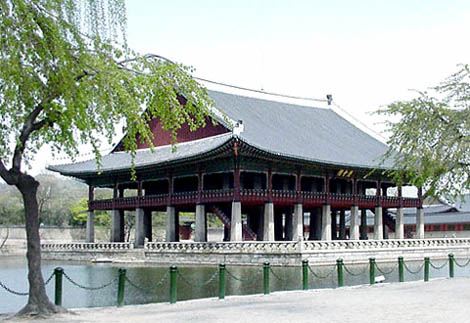
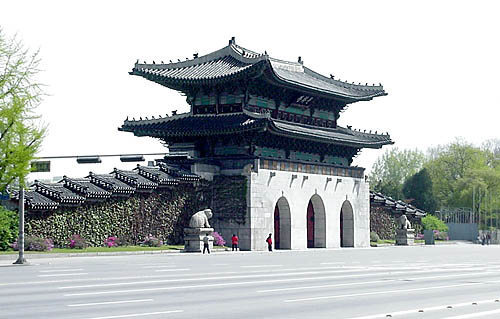
Geunjeongjeon , also known as Geunjeongjeon Hall, is the throne hall where the king formally granted audiences to his officials, gave declarations of national importance, and greeted foreign envoys and ambassadors during the Joseondynasty.
Gyeonghoeru , also known as Gyeonghoeru Pavilion, is a hall used to hold important and special state banquets during the Joseon Dynasty.
Gyotaejeon , also called Gyotaejeon Hall, is a building used as the main residing quarters by the queen during the Joseon Dynasty. The building is located behind Gangnyeongjeon, the king's quarters, and contains the queen's bed chamber.
Hyangwonjeong , or Hyangwonjeong Pavilion, is a small, two-story hexagonal pavilion built around 1873 by the order of King Gojong when Geoncheonggung residence was built to the north within Gyeongbokgung.
Jagyeongjeon , also called Jagyeongjeon Hall, is a building used as the main residing quarters by Queen Sinjeong , the mother of King Heonjong.
Taejo,The First King Of Joseon
The founder of the Joseon Dynasty was born in 1335 as Yi Seong-gye in Hamheung,a coastal city in what is now North Korea,Yi,the son of a minor official,joined the army and went on to become a general,gaining a reputation as a capable military commander.As the Goryeo Dynasty neared its end,the kingdom was beset with raids and invasions by Japanese pirates and the Chinese Red Turbans.Yi and fellow general Choe Yeong proved effective in beating back three attacks,and their power and influence grew.
In 1368,the Ming finally overthrew the Mongol-dominated Yuan Dynasty in China.In 1388,the Ming demanded that Goguryeo transfer to China large parts of northern Korea,in retaliation,King U of Goryeo set in motion an invasion of parts of Manchuria claimed by his kingdom.Put in command of the invasion force,Yi marched his forces north,just before crossing the border,however,Yi rebelled,leading his troops south to seize the royal capital of Gaeseong.After placing several pippet kings on the throne,Yi finally took the throne for himself in 1392,adopting the royal name King Taejo and bringing the Goryeo Dynasty to a close.Allying himself with Confucian reformers like Jeong Do-jeon who wished to transform the kingdom along Confucian lines,Taejo and his court set about turning the new Joseon Dynasty into a model Confucian state,led by a king and a court composed of Confucian scholar-officials.He established a new capital where the new dynasty could develop free from the trappings of the old regime.Although Taejo reigned for only six years,the dynasty he founded lasted over five centuries.
Taejo of Joseon
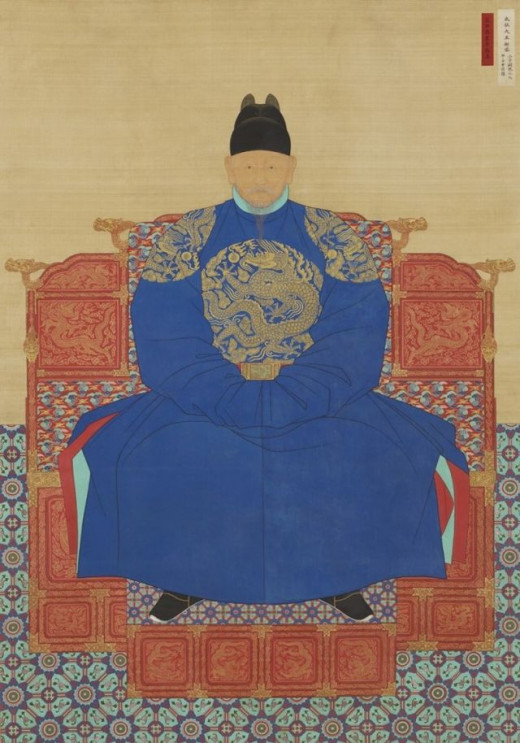
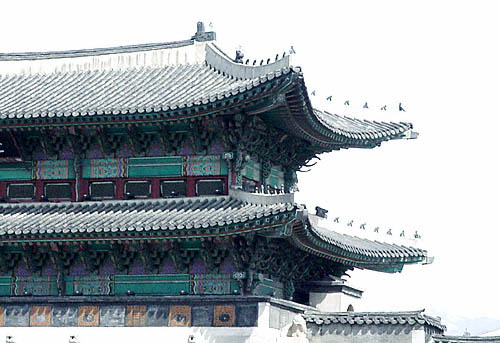
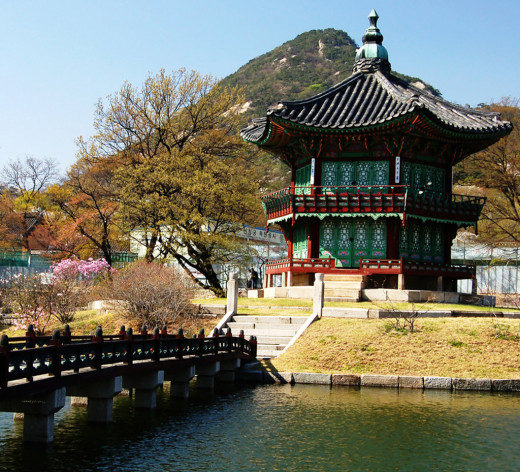
Jibokjae , located next to Geoncheonggung Residence, is a two-storey private library used by King Gojong. In 1876, a major fire occurred in Gyeongbokgung Palace, and King Gojong, for a brief period, moved and resided in Changdeokgung Palace.
Sajeongjeon , also called Sajeongjeon Hall, is a building used as the main executive office by the king during the Joseon Dynasty. Located behind Geunjeongjeon Hall, the king carried out his executive duties and held meetings with the top government officials in Sajeongjeon.
Sujeongjeon , a building located to the south of Gyeonghoeru, was constructed in 1867 and used by the cabinet of the Joseon dynasty.
Taewonjeon , or Taewonjeon Shrine, is an ancestral shrine originally built in 1868 to house a portrait of King Taejo, the founder of the Joseon dynasty, and to perform rites to the deceased royalties.
Donggung, located south of the Hyangwonjeong pavilion, was the compound where the crown prince and his wife were living. The four main buildings of the compound were Jaseondang and Bihyeongak, Chunbang (lecture hall, where the prince got the education preparing him to the throne), as well as Gyebang (the security building).
Geoncheonggung, also known as Geoncheonggung Residence, was a private royal residence built by King Gojong within the palace grounds in 1873.
The back garden of Gyeongbokgung used to contain the main part of the JapaneseGovernor-General's residence, that was built in the early 20th century during the Japanese occupation.
Enduring Symbol of Joseon
After being reduced to ashes during the Japanese invasions,Gyeongbokgung remained in rubble for over 200 years until a reconstruction project began in 1860.In spite of this neglect,various ceremonies were held on the Gyeongbokgung grounds during the 18th century by the Joseon kings as a way of paying tribute to the dynasty`s founders,which served to revive the palace`s standing as a prominent symbol of the royal authority of Joseon and its founders.
When King Gojong assumed the throne,his father,the Prince Regent Heungseon Daewongun,initiated a grand plan to restore the dignity and authority of the royal throne in 1865,which had been eroded during the 19th century.Accordingly, Gyeongbokgung was restored during Gojong`s reign.The original layout was retained in general,but the new palace was larger and included more buidings.Prior to Gojong`s declaration in 1870,under which he was designated the ruler of the nation,Gojong had built another complex,the Geoncheonggung,in the rear of the palace.But in 1895,while Gojong and his queen were residing at Geoncheonggung,Japanese agents assassinated the queen.In a flurry of events that would change the course of Korea`s political history,Gojong took refuge at the Russian Legation and proclaimed the founding of the Daehan Empire,thereby ending Gyeongbokgung`s role as the main Joseon palace.
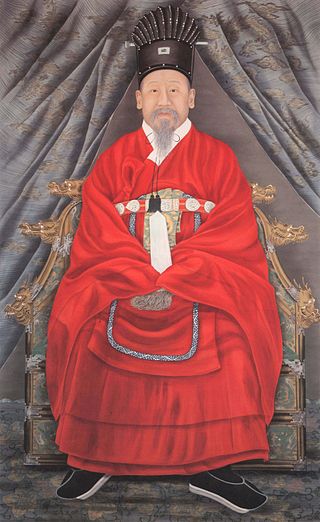
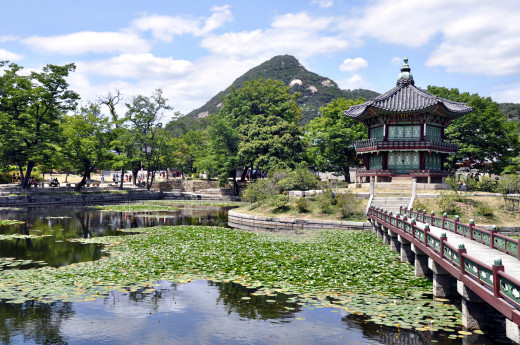
After Korea became a colony of Japan (1910-1945) ,the Japanese authorities wrought serious demage to Gyeongbokgung in an effort to demonstrate their imperial power.Numerous buildings and features of the palace were demolished.The crowing blow came in 1920,when the office of the Japanese Government General was built directly in front of the Gyeongbokgung throne hall.Having long symbolized the royal authority of Joseon,Gyeongbokgung was now overshadowed.
After Korea`s liberation in 1945,there were calls for the removal of the former Government General Building,which served as a painful reminder of Japan`s colonial rule.Resolution would have to wait until 1990s,however.During this time,a "Set History Right"movement took hold in Korea as an effort to enhance the people`s understanding of the Japanese colonial period and to bolster Korea`s national pride.Plans for the restoration of Gyeongbokgung were an integral aspect of these efforts.
But even the demolition of the Japanese Government General Building,which enabled the Gyeongbokgung restoration to get under way,was not free of controversy.In the end,however,calls to restore Gyeongbokgung to its former glory won out.The palace embodies the spirit of the Joseon founders and has stood for some 500 years as an enduring symbol of the Joseon Dynasty.
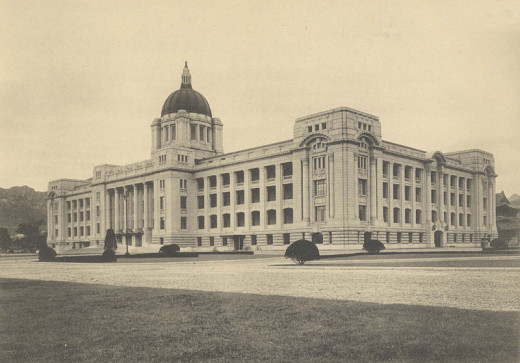
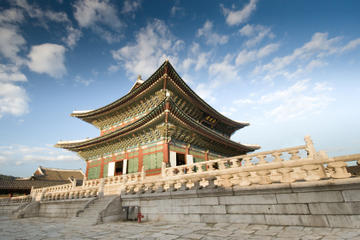
The Murder of Queen Min
Joseon at the time was virtually ruled by Queen Min on behalf of the KIng.The Japanese attempted but failed to drive her out of power,but she and the king turned to Russia for help to counterbalance Japan`s influence.Opportunely the "triple intervention" of Russia,France and Germany,in the spring of 1895,forced Japan to give back to China the Liaodong peninsula ,a major trophy Japan had won in the Sino-Japanese War.With this blow to Japan`s strength,Gojong and Queen Min seized a rare opportunity to finally rid their country of Japanese control.
Uneasy with Russia`s increasing influence in Joseon ,Japan saw the need to restore its control as a matter of life or death.The Japanese plotted to assassinate Queen Min,who led her kingdom`s pro-Russian diplomacy,and mapped out a plan of operation code-named "fox hunting".At about the time the pro-Japanese elements were ousted from the government,Miura Goro was sent to Joseon as the new Japanese minister with a secret mission to assassinate Queen Min.As soon as he arrived in Seoul,Miura secretly oranized a Japanese surprise attack on Queen Min`s residence,the Gyeongbokgung palace.After killing the guards stationed at the palace gates,the attackers dashed into the queen`s chamber.Although it is commonly believed that she was killed in her bedroom ,she was actually dragged to a courtyard and publicly hacked to death with a sword.The queen`s body was burned ,and the remains were buried to destroy proof of the atrocity.
The Japanese government denied any involvement ,but Miura had obviously orchestrated the murder.At the time Queen Min was slaughtered Japan had extraterritorial rights in Joseon but,fearing condemnation from abroad,the Japanese government recalled Miura and his 47 accomplices to stand trial in Japan.Even with the testimony of numerous eyewitnesses at trial,the assassins were found not guilty on the grounds of insufficient evidence.
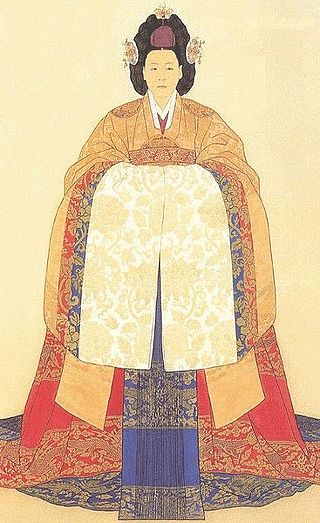
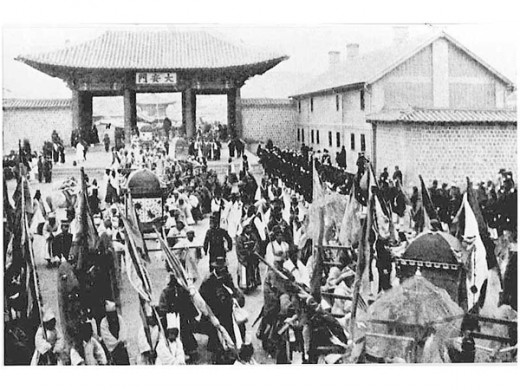
Gyeongbokgung: The Palace of Shining Virtue
Originally built in 1395 at the start of the Joseon Dynasty, Gyeongbok Palace is considered to be the grandest of the five palaces in Seoul.
